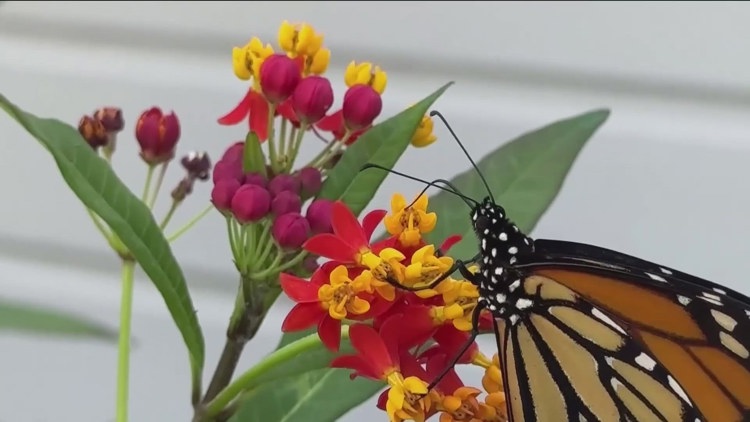SPRINGDALE, Ark. — The annual Monarch Flight Festival released around 50 monarch butterflies on Sept. 14. Every year the Shiloh Museum of Ozark History partners with Downtown Springdale to raise awareness about the plight of monarch butterflies.
Although it was a beautiful sight to see on Saturday afternoon, that sight is on the verge of extinction.
"The numbers are down drastically like 90% loss of what they used to have," Shiloh Museum grounds manager and monarch advocate Marty Powers said.
According to Powers, these numbers are down due to a loss of habitat.
"90% of the monarch population is based around agricultural areas," he said. "[Farmers have] developed strains of seeds that are genetically modified so that they're resistant to Roundup glyphosate. Now the farmers can just spray their whole fields with Roundup, and it doesn't kill everything except their corn or soybeans. Along the edges and borders of the field is where a lot of the milkweed grows."
Powers said this process has caused a huge reduction in milkweed. With the reduction in milkweed, the number of monarchs released at this year's flight festival was impacted.
"Last year, we had close to 100 that we turned loose, and this year, we had close to 50," Powers said. "It's because this spring, we hardly saw any monarchs come through in the spring, and this fall, the numbers are down too."
The Monarch Flight Festival celebrates the time of year when monarch butterflies migrate south to Mexico.
"The monarchs that are coming through now are either the fourth or fifth generation," Powers said. "They're heading down to the same oyamel fir forests in central Mexico, the same area that they go to every year, but the monarchs we see now have never been there. It's their great, great, great grandmother that left there in the spring. It's amazing that they somehow know exactly where to go in Mexico."
In our ecosystem, monarch butterflies play an important role as generalist pollinators.
"We have to have pollinators. Monarchs are part of a bigger group of pollinators," Powers said.
Bees, the monarchs' fellow pollinator, is also experiencing a decrease in population. Powers said the best thing humans can do for these pollinators is to plant native nectar plants.
"What's good for the monarch is good for all pollinators. Let's plant ... some native nectar plants, and just do what we can to help these monarchs survive," Powers said.
The museum collects eggs that monarchs lay, puts them in containers, and raises them to adults while tagging them. Tagging them helps monitor the migration and collect data. This process takes about a month.
"It's about two to four days as an egg, 10 to 14 days as a caterpillar, and 10 to 14 days as a chrysalis," Powers said. "You have to try to time it. We don't keep the monarchs longer than 48 hours because they need to be out flying and nectaring."
The Shiloh Museum will release an extra 150 monarch butterflies in the next few days once their life cycle is complete.
Watch 5NEWS on YouTube.
Download the 5NEWS app on your smartphone:
Stream 5NEWS 24/7 on the 5+ app: How to watch the 5+ app on your streaming device
To report a typo or grammatical error, please email KFSMDigitalTeam@tegna.com and detail which story you're referring to.



